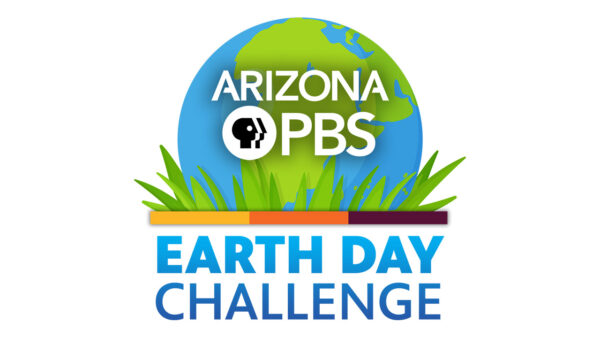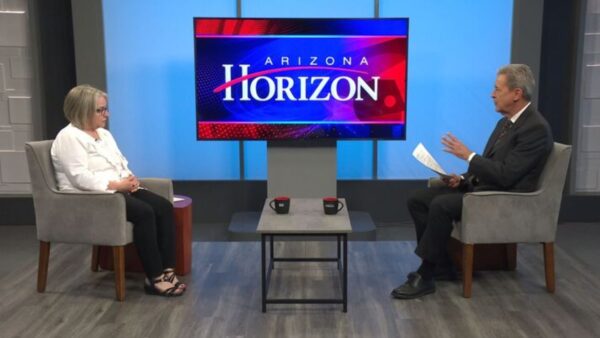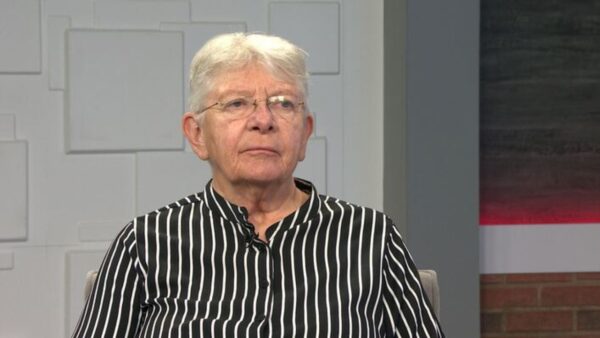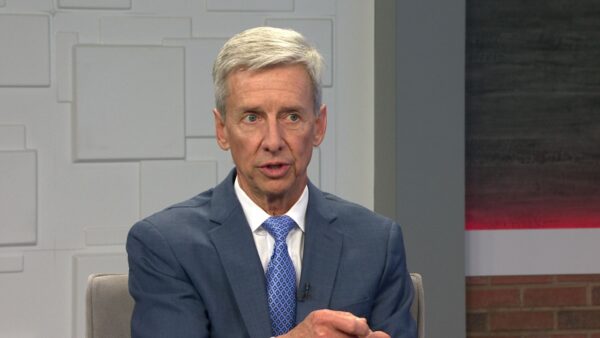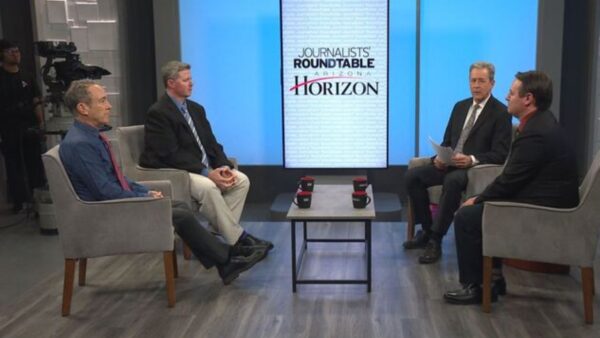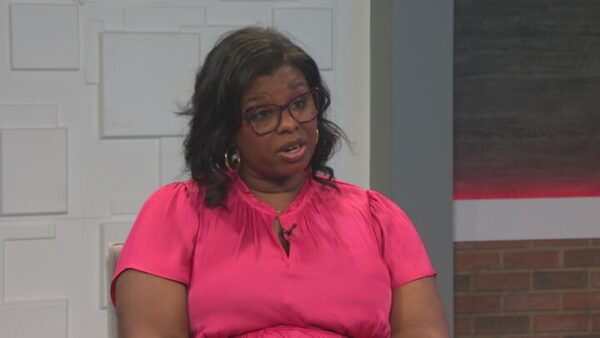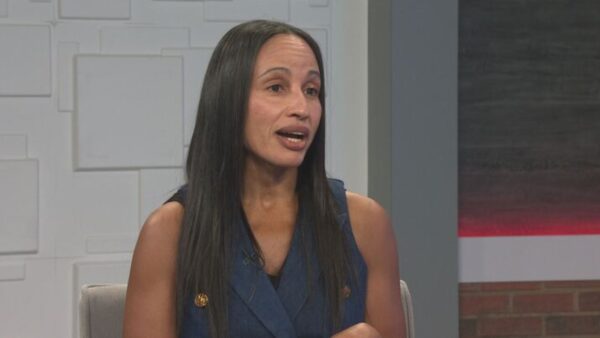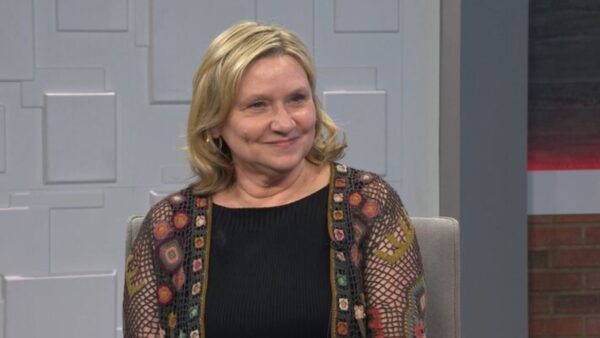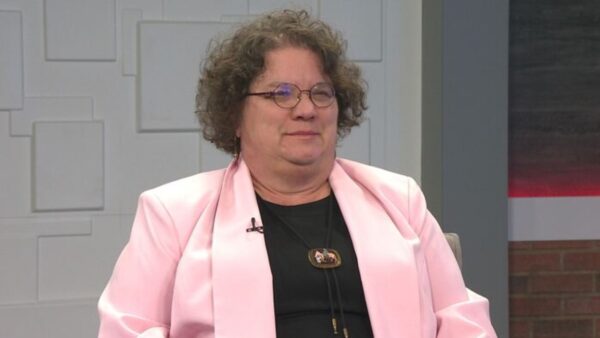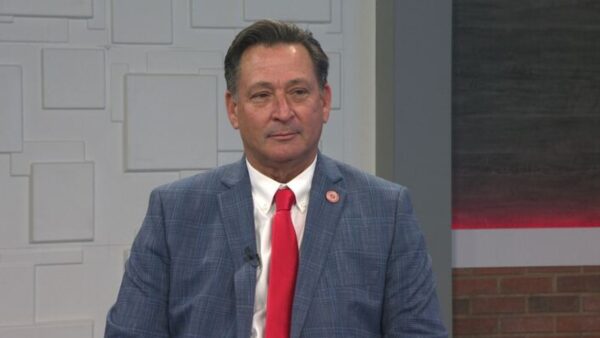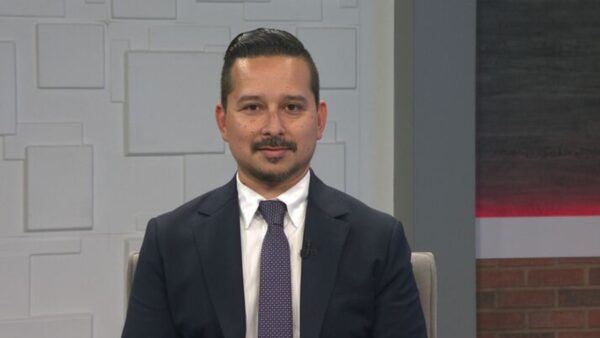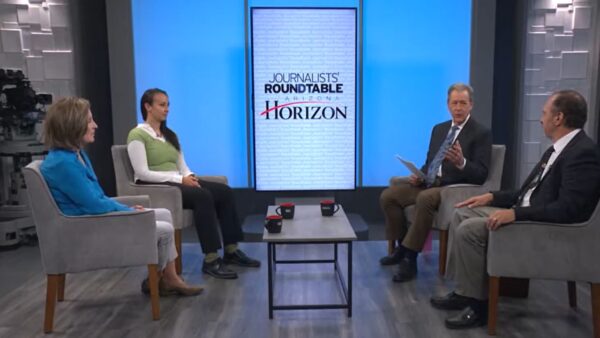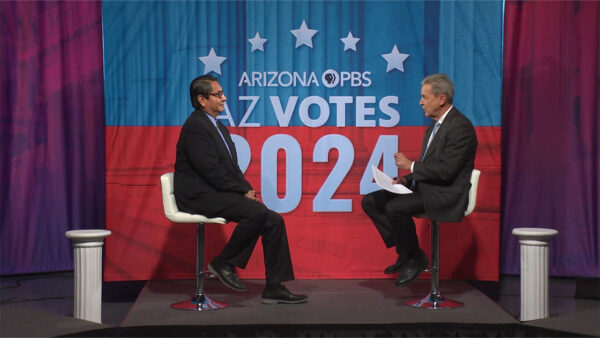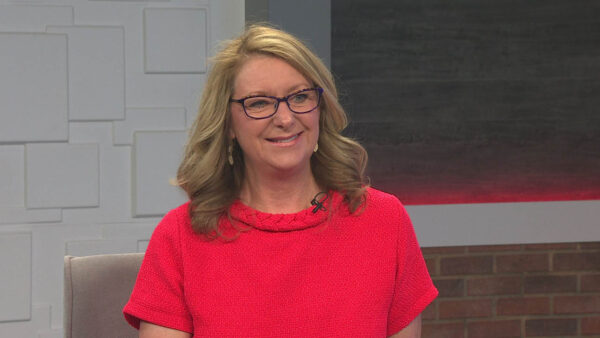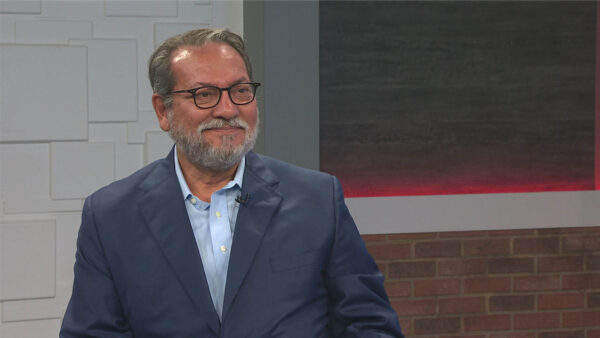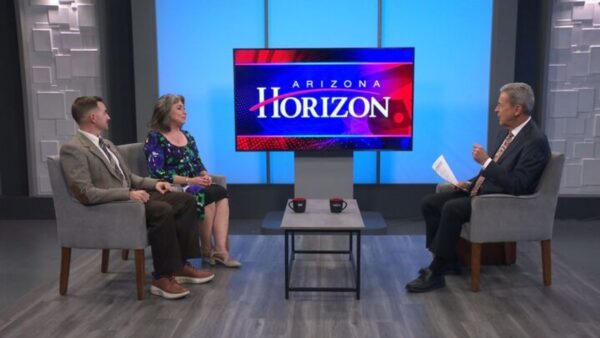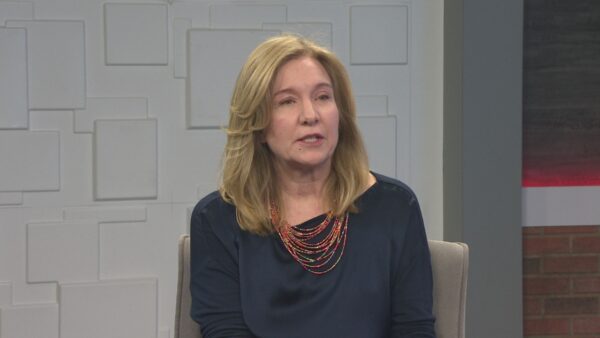Three stories that honor the memory of those who have given their lives in the service of their country – a medal of honor recipient, Jose Jimenez, Michael Williams who gave his life saving others in the Iraq wars, and veterans of Falcon Field return every year to honor those who fell while training in the second world war.
>> Michael Grant:
Tonight on "Horizon", three stories that honor the memory of those who have given their lives in the service of their country, a medal of honor recipient, Jose Jimenez, Michael Williams who gave his life saving others in the Iraq wars, and veterans of Falcon Field return every year to honor those who fell while training in the second world war.
>> Announcer:
"Horizon" is made possible by the friends of Channel 8, members who provide financial support to this Arizona PBS station. Thank you.
>> Michael Grant:
Good evening, I'm Michael Grant. Welcome to this special Memorial Day edition of "Horizon." The medal of honor is the military's highest award for valor in action against an enemy force, from the civil war to the war in Iraq, a total of 3,460 have been awarded that medal. Arizona has had a dozen Medal of Honor recipients, including an Eloy marine named Jose Jimenez who fought in Vietnam.
>> Singing:
The long and winding road
>> Paul Atkinson:
They came from all walks of life to fight in Vietnam. The late summer of 1969, the men of company K, 3rd battalion, 7th regiment first marine division would experience a day few would ever forget.
>> Alan Jones:
August 28, 1969. I still have dreams about that day. We had many difficult days in Vietnam, but that was one of the worst. We lost quite a few good marines during that battle in Death Valley.
>> Paul Atkinson:
Alan Jones was a member of K or KILO company, as it was known. His team had already taken on snipers that hot miserable day when orders came to take out an anti-enemy aircraft gun on hill 381. They made it with 150 feet to kill before gunfire from AK-47s forced the men to dive into the grass. No one moved except one, Lance corporal Jo Jo Jimenez.
>> Alan Jones:
Jo Jo, he was determined to go up there to take out the enemy and get that gun. And that's what he did. He took out quite a few of the enemy and just kept on charging even though he was being fired at. It was astonishing.
>> Paul Atkinson:
Jimenez killed six Vietnamese soldiers before including the one manning the 15-mm. machine gun. Before he could continue up hill, a distant shot from an AK-47 struck Jose Francisco Jo Jo Jimenez in the head. The death of the KILO Company's fire team leader sent a shock throughout the squad. There was no shortage of volunteers to retrieve his body.
>> Alan Jones:
A few of us got together, made a plan to go down and bring him back. It kind of tells you about the kind of person that Jo Jo was. There were so many volunteers who would go down there, even though we knew some of us probably wouldn't be coming back.
>> Paul Atkinson:
A total of three men died trying to retrieve Jo Jo's body. Three others were wounded. A sniper and grass fire prevented K Company from getting Jo Jo back until the following day.
>> Waldo Avalos:
Jo Jo wound up in what was like a killing zone. Every time we got up there to get his body, they would open up on us.
>> Paul Atkinson:
Waldo Avalos was Jo Jo's friend.
>> Waldo Avalos:
When I first got there, he knew I was new. He tried to teach me everything he could. Keep me alive.
>> Paul Atkinson:
As it turned out, it was Jo Jo who died in Vietnam but he didn't have to. He wasn't drafted. He wasn't even an American citizen.
>> Pilar Jimenez:
Everybody said there was ways to stop him from going because he wasn't a citizen, he was born in Mexico and he was a citizen of Mexico. There was no reason for him to enlist or go to the war.
>> Paul Atkinson:
Pilar Jimenez was Jo Jo's sister. They lived in a ranch in Red Rock just north of Tucson, which earned Jimenez a nickname from a popular Beatles song.
>> Singing:
Jo Jo was a man who thought he was a loner, but he knew it couldn't last Jo Jo left his home in Tucson, Arizona, bought some California grass
>> Paul Atkinson:
But Jimenez was originally from the city of --- in the Mexican state of Morelia. He lived with his grandmother. He came to Arizona at the age of 10 to live with his sister and mother who had worked at the Mexican consul. Jose Francisco Jimenez wore a poncho as he was known here went to work at the ranch and made many friends in the school.
>> Pilar Jimenez:
He made many friends, future farmers of America. On his last year he was made president. Everyone knew him at school. At Santa Cruz Valley High School, that's where he went.
>> Paul Atkinson:
Friends say eventually he wanted to return to Mexico and help his family but his first duty was to help the country that had given him so much.
>> Pilar Jimenez:
He wanted to go because of his friends, and he grew up here and he wanted to show his appreciation to the United States for how well they treated my mom and him and me by letting us come over here and live. He felt grateful.
>> Waldo Avalos:
Jo Jo felt he owed this country for giving him a good education, given him a lot of things that he didn't have in Mexico.
>> Paul Atkinson:
Despite his citizenship, his acts of bravery did not go unrecognized. Almost a year after his death, Lance Corporal Jo Jo Francisco Jimenez was awarded the Congressional Medal of Honor, the military's highest award.
>> Alan Jones:
It is amazing that he would risk his life for the American cause in Vietnam. Knowing Jo Jo, he wanted to do the right thing. I know he was very proud to be a member of the marines. I know he was, and he always wanted to do the right thing. Maybe that was part of the reason he was so brave, so loyal, so determined to do the right thing on the battlefield. He never wanted to shirk his responsibilities; he always went forward risking his life quite a few times.
>> Paul Atkinson:
President Richard Nixon gave the award to Jo Jo's mother and sister in a ceremony at the White House. The award was appreciated but did little to comfort the grieving family.
>> Pilar Jimenez:
It was hard on my mom, everybody. It took a long time. Even now I'm starting to feel it again, but I couldn't even mention his name.
>> Paul Atkinson:
Jimenez died a hero in his adopted country that wasn't necessarily the case in his native Mexico.
>> Waldo Avalos:
Mexico was against the Vietnam War. And you were a Mexican citizen like he was, and you went to Vietnam, they considered you a mercenary.
>> Paul Atkinson:
Then there was the issue of Jo Jo's military head stone. The family couldn't afford to send the heavy granite slab to Mexico. It sat under his mother's bed for 17 years until volunteers and veterans paid for a flight and conducted an official military ceremony at his gravesite in Morelia. Even at the time, Jo Jo's mother believed him to be alive.
>> Pilar Jimenez:
She hoped he would come back, even with the family over there. He never got married, never had kids. She always had that hope that he would come back.
>> Paul Atkinson:
Jose Francisco Jimenez would never come back but his legacy lives on. Marines in a naval station in Spain named a barracks after Jimenez. The Marine Corps training manual was used as an example for the marine making the ultimate sacrifice. His life cut short at the age of 23, Jo Jo Jimenez would leave a lasting impression on the people he grew up with and those he served with.
>> Alan Jones:
We wanted to believe there was a reason why they died. They did something good for the world but it's one of the travesties of the Vietnam War. Jo Jo was a fantastic human being as everyone was. They were just a fantastic bunch of young boys that fought in that war and I hope that they're always remembered.
>> Michael Grant:
On March 20th, 2003, the United States launched "Operation Iraqi Freedom" at 5:30 in the morning Baghdad time. Initial air strike attempted to target leaders. Second round of air strikes fell on Baghdad. From that day, over 50 Arizonans have been killed serving their country in Iraq and Afghanistan. Lance Corporal Mike Williams' convoy was the second marine from Arizona to die in action. His unit was ambushed near Nasiriyah on March 23, 2003. He is survived by his mother, Sandy Watson and at the time was engaged to Heather Strange, both from Phoenix. This story is about their loss.
>> Sandy Watson:
The thing I liked about Mike the most is he was very big-hearted.
>> Heather Strange:
He was such a good, kind-hearted person. He would do anything for anybody.
>> Sandy Watson:
He was very social. He liked to be with people. When they were having a problem, he was a great listener.
>> Heather Strange:
He made me feel special and made me feel loved.
>> Larry Lemmons:
A mother and a fiancé. They are bound with the spirit of a man who gave his life for his country. Lance Corporal Michael Williams was a marine in the coalition forces that liberated Iraq. He was a forward observer of the first battalion, second marine regiment, second marine expeditionary brigade. He was killed March 23, 2003, near Nasiriyah.
>> Man:
We have with us in the audience, members of the Williams family. Michael Williams was killed in service almost a month ago.
>> Larry Lemmons:
Maricopa County employees are honoring his memory at this ceremony. His mother, Sandy Watson and his fiancée, Heather Strange remember the man who became a marine.
>> Sandy Watson:
Michael was a very active child. He was very creative, very artistic, very artistic, very active. The big challenge was to get his life directed in a positive way. That's not always easy to do. Up to the time he joined the marines it was very difficult.
>> Larry Lemmons:
Anyone who said you can never change never met Mike Williams. He joined the marines at a relatively older age after a troubled youth.
>> Sandy Watson:
He had a rough young adult life. That's what made this that much more of a shock for all of us. He came home one day and said, I joined the marines. But that was Mike.
>> Larry Lemmons:
Coverage of the war on television captivated the world. But the images were more personal for Sandy and Heather.
>> Sandy Watson:
Everybody that I know was glued to the TV. CNN, MSNBC, all of them because of the better reporters and the blow by blow descriptions, oh, yeah. Of course everybody was trying to see people they know. It made it interesting, it made it real.
>> Heather Strange:
I had to stop watching TV. The last day I watched the news was March 23rd. And that was the day he was killed. And for some reason that day, I had no idea where he was at. I had a general idea based on information he had given me and his mother. I had a general idea. That day was really, really hard. I cried the entire day, I couldn't stop crying and I had an uneasy feeling.
>> Sandy Watson:
They were in a convoy of troop transport. I think there was 11. There wasn't much going on that morning, believe it or not. They were just hanging out until they got their orders. And they saw the 507 go by, which I understand was Jessica Lynch's and Lori Piestewa's group. And the reaction was, what are they doing here? They weren't supposed to see them. We found out later they took a wrong turn. They decided to check it out because it didn't make sense. They took out after them and they never did catch up to them. After awhile they turned around to return. In doing that, they crossed the bridge to go over.
>> Heather Strange:
While they were approaching the bridges they were ambushed. There was fire coming from multiple directions, RPGs machine gunfire, you name it, it was coming at them. A couple of the troop movers in front of Mike had actually gotten hit with an RPG. And the men were still alive inside.
>> Sandy Watson: This one marine, John Kleine who sends up -- my kids were born in Reno and he lived in Reno a long time, he's from Reno. To make a long story short, he was the one getting the people out of these AAVs and they were telling him not to do that. He said I have to, this is my family. Whether they were dead or alive, he was pulling these people out. In doing that, Mike and Patrick Nixon, who also died with Mike, beside Mike, manned the mortars to cover him.
>> Heather Strange:
Mike was actually providing coverage for those marines, medics and so forth while they were trying to move the injured to a safe spot and he was hit directly with the mortar in the process.
>> Sandy Watson:
The marines said some friendly Iraqis presented Mike's dog tags to them and said they had buried them. Plus, I heard they didn't want to have anything happen to the bodies. They had buried them and gave them the dog tags and said that they would show where they had buried him. I think what happens is, God gives you a peace. I definitely felt that. You can call it shock or whatever, but I was -- Mike was killed on a Sunday. Starting that night I didn't sleep well at all. I kept hearing knocks at the door. I would get up to answer the door, my husband would tell me nobody's there, please get back in bed. He would go check. A few nights later when we really did get a knock at the door, I wasn't really surprised.
>> Larry Lemmons:
Sandy and Heather keep in touch with the families of the young men that were killed with Mike. They say their faith has helped them cope with their profound loss, but their grief is a constant reminder.
>> Heather Strange:
I was planning on moving to North Carolina to camp La June where he was stationed and we were going to get married and start a family. All of those things are just impossible now.
>> Sandy Watson:
I hope nobody else has to deal with something like this, but I think it's very important to get in touch with your beliefs, what you believe in. It's important to cultivate good friends and be in touch with your family and love each other.
>> Larry Lemmons:
Lance Corporal Michael Williams died fighting to save his fellow marines. Sandy's son and Heather's fiancé is gone. What remains is the memory of an ordinary person who when confronted with his mortality did extraordinary things for his family, friends and country.
>> Sandy Watson:
I knew somewhere under all of that other stuff, every once in awhile I would see this person that I knew was there. As a mother, you have, you know what your kids really, truly can be, usually, because you see glimpses of it that maybe other people can't see. I knew what was under there. And I was very proud of him. I finally got to meet the man I knew was there. My biggest heartbreak is that I won't be able to enjoy that after 29 years of trying to find it.
>> Heather Strange:
These are his dog tags. He gave these to me before he left on January 2nd.
>> Michael Grant:
Every year former cadets at Falcon Field in Mesa return to honor comrades who died while training. Before the United States entered World War Two, Falcon Field became a training facility for Royal Air Force pilots. American and British instructors would train pilots who would replace those killed in the Battle of Britain. In all, 29 British and American comrades died serving their country at Falcon Field.
>> Bill McCash:
I am privileged to be here and to address all of you attending this annual memorial service in honor and to pay homage to our 23 Royal Air Force comrades who died here. At the same time, I ask you not to forget the five Americans who served and died with them.
>> Larry Lemmons:
Every year at this cemetery in Mesa, former British pilots return to remember the men who died while training at Falcon Field during World War II. It's a unique ceremony celebrating the bond between the United States and Great Britain in war and peace.
>> Bill McCash:
We who were involved in this scheme will never frankly forget what you did for us.
>> Edward Murrow:
This is Edward Murrow speaking from London. There were more German planes over the course of Britain today than any time before the war began.
>> Larry Lemmons:
Before the United States had entered the war, the British were desperate to train new pilots. What the United States did for Britain was to participate in the entire air-training scheme.
>> Bill McCash:
We didn't have the weather, we didn't have the air bases, we didn't have the gasoline for it and the general came across just after the battle of Britain and offered places at the American schools. And the idea came up that a British school with British instructors run by American instructors with supervision. It was important that we got pilots from every source we possibly could because the death toll was pretty high in the early days as you can imagine.
>> Larry Lemmons:
One of the new schools, Falcon Field, was established in Mesa and flying operations began in 1941. Today, Falcon Field airport is home for nearly a thousand aircraft and multiple businesses. At Falcon Field Park, very little remains of the site where the RAF cadets lived and trained. A swimming pool served as an initiation ritual.
>> Bill McCash:
When you did your first solo, into the pool you went, uniform and all. Yes, indeed it was a great thing.
>> Larry Lemmons:
A hearth still stands, although the building around it does not, where cadets relaxed and talked about their daily challenges. The old hangers are still at the field, while the area around them has changed. And activity in the park today is more likely to be play rather than work. For surviving pilots, however, the place still evokes memories.
>> Ken Beeby:
We came down by train to Chicago and changed to come to Phoenix on the railroad. It was air conditioned with evaporative cooling. However, we arrived in the Mesa station in August of 1942, and when those doors opened on the train, it was like walking into a wall of fire. And there were two Mesa school buses parked outside that had been there for a couple of hours. And we all had our RAF uniform on about half an inch thick wool. By the time we got to Falcon Field, 6 miles away, we had all lost 10 pounds.
>> Larry Lemmons:
The recruits were trained primarily on STEERMEN and the 86. Although some of the young pilots had never driven a car, they were nevertheless expected to fly.
>> Jack May:
I was taxiing rather too fast in and I put on the brakes and up went the tail and down went the nose and it had to sit there and wait until they brought the tail back down. Having done quite a bit of damage.
>> Larry Lemmons:
Most of the aircraft maintenance was done at night and frequently by women who played a large role in Falcon Field success.
>> Tom Austin:
We were invited over to the state teachers college in Tempe for some formal dances, etc., and we met some very pleasant young ladies over there, which eventually we used to go out on a Saturday afternoon in the desert for a weenie roast. We remember once that we were out there enjoying our weenie roast when we saw in the distance, there must have been about six chaps who were at least 6'6". The girl said, don't start trouble. I gather that they were part of a football team. Anyway, in actual fact, we met them and we finished off the best of friends.
>> Larry Lemmons:
A testament to his training at Falcon Field, Tom Austin eventually became a highly decorated pilot during the war. Ultimately the result of training at Falcon Field was to create not only a bond between the young pilots that has endured to this day, but also a connection between the British men and the Mesa community.
>> Tom Austin:
I can't speak highly enough how they accepted us. When we actually arrived on the first Saturday we were allowed out we had exactly 200 cars came through the main gate to request us to join them for the weekend.
>> Larry Lemmons:
That Anglo American relationship continues to this day reflected in the annual ceremony honoring the fallen pilots. On this day in this cemetery, the pilots have in a way come home. For there will always be a small but significant piece of British history in the heart of the City of Mesa.
>> Michael Grant:
Our thanks to all who served and all who continue to serve. And our thanks to you for joining us for this special Memorial Day edition of "Horizon". I'm Michael Grant. Have a good one. Goodnight.



